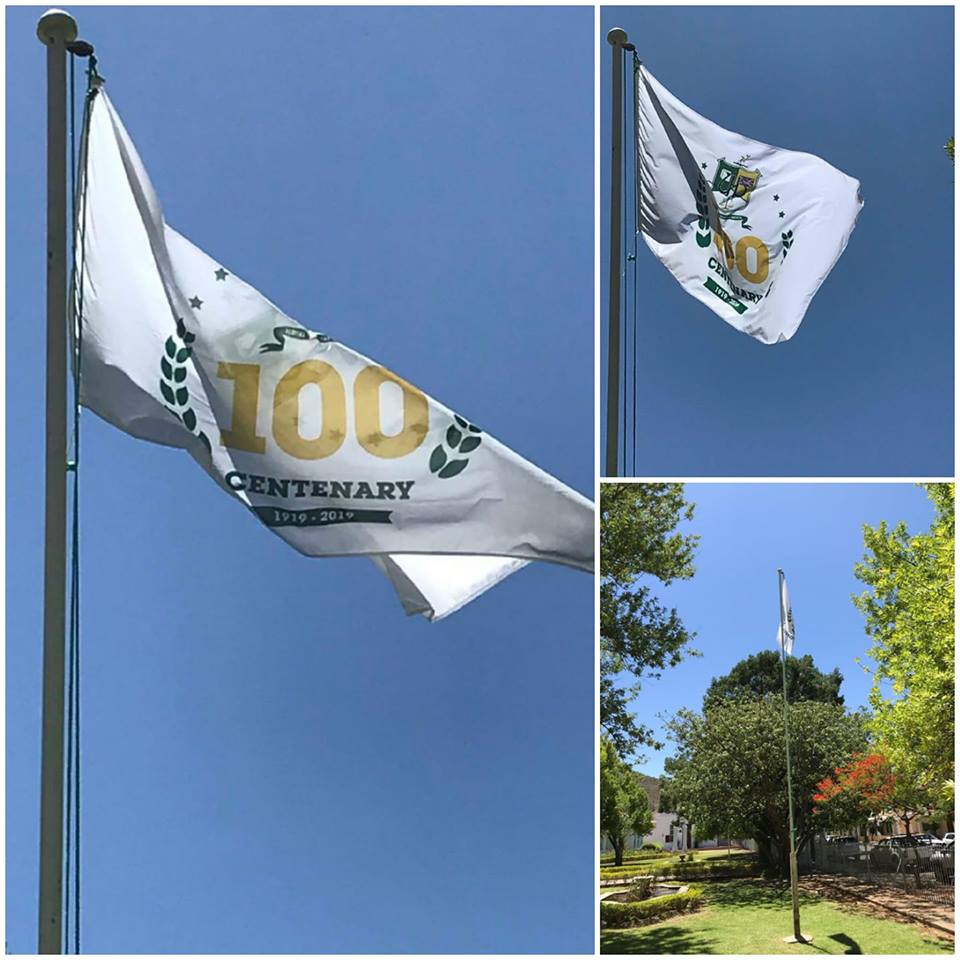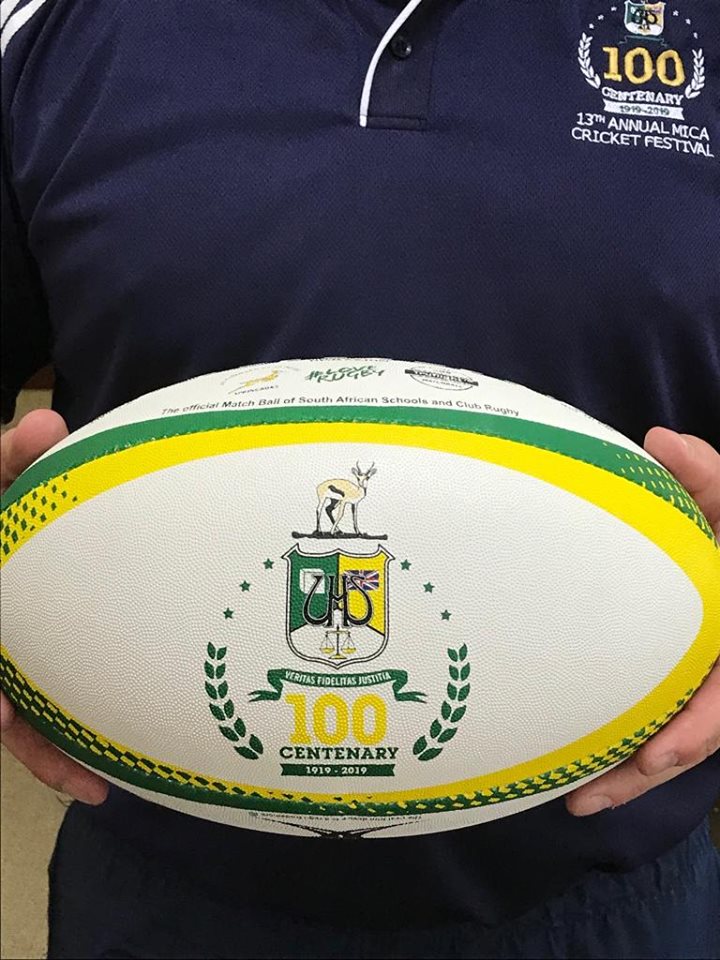GRAAFF-REINET NEWS - Union High School in Graaff-Reinet celebrates its centenary this year.
The school will kick off the year's festivities with its annual Founder's Weekend this Friday and Saturday, 1 and 2 February.
Celebrations begin at 08:00 on Friday with a church service at St James' Anglican Church, whereafter staff, learners, parents and friends of the school will partake in a historical walk through Graaff-Reinet, past buildings of significance to Union's past.
Various activities are planned throughout the rest of the weekend and the school can be contacted at 049 891 0262 for information in this regard. In May, a Centenary Banquet will take place on the beautiful kikuyu'd fields which were planted in 1926, under the shadow of Old Spandau.
A proud history
The school, as it stands today, evolved out of several other educational facilities that existed in Graaff-Reinet in the early 1900s, including the St. James’ Church School, the Seminary and the Graaff-Reinet College, which makes the exact date of commencement very difficult to determine.
It was, however, in 1919 after World War I when there was no English-medium school in Graaff-Reinet, that parents and other residents of the town decided to make an effort to ensure an English language education for their children. They then formed a private school, called Union High School in the hall of the St. James’ Anglican Church.
In 1921, however, the financial strain was beginning to tell. The St James’ Hall had become totally inadequate to house the number of pupils, and hired rooms were dotted about the place for various classes. It speaks volumes for the courage and tenacity of the school’s committee and its principal for the gallant way in which they weathered that trying period.
An appeal was later sent to headquarters stating, “You must take us over. We have proved, at a heavy cost to ourselves, that a change of plan is necessary for the educational arrangements in Graaff-Reinet.” As a result of this appeal, a Commission of Enquiry was sent to Graaff-Reinet in November 1921, under the chairmanship of Dr. Viljoen, then Superintendent General of Education.
The position in the way of Graaff-Reinet schools towards the end of 1921 was, therefore, as follows: The Training College - with roughly 120 students - was housed in the Old College Buildings in Bourke Street, while plans were in hand for the erection of new buildings for them on the beautiful Glebe Lands donated by the Town Council to the school’s administration. The Graaff-Reinet Boys’ College was over at the station in the fine buildings, which still stand as a monument to the work of that great South African headmaster, the late Mr. W.A. Way.
The Midland Girls’ Seminary, situated in Somerset Street, flourished under the perseverance and service of Helen Murray. Finally, there was the Private Union High School in St. James’ Hall and surrounding rooms, and the Convent School in Cradock Street. In a masterly manner, Dr Viljoen and his Commissioners devised a solution which not only settled the acute educational difficulties of Graaff-Reinet at the time, but has stood the test of time in a wonderful way - in fact it gave a new lease of life to education in this town, so that all its institutions grew and prospered: The training College should go out to the Boys’ College buildings at the station, with the Spes Bona Primary School on the ground floor as a practicing school.
It provided for the discontinuance of the Boys’ High School and the Girls’ High School as such, and the replacement of these two schools with:
(1) A school with Afrikaans as a prevailing medium in which provision should be made, if necessary, for instruction through English in accordance with the Education Ordinance, if scholars attended whose home language was English; and
(2) A school with English as a prevailing medium in which provision should be made, if necessary, for instruction through Dutch, if scholars attended whose home language was Dutch.
The Private Union High School merged into this latter school, and it was thus that the “Government” Union High School was founded towards the close of 1921 as a direct result of that intrepid experiment of 1919. The new Committee, with Walter Rubidge as first Chairman, and the Rev J.H. Whaits as Honorary Secretary, took over in April 1922, with a newly-appointed Government Staff of teachers and Arthur Puttick as Headmaster.
On 1 January 1922, the Education Department agreed to these recommendations and established the “Government” Union High School, which moved to old Graaff-Reinet College buildings in Bourke Street. This school became operational on 1 April 1922. Dr. Viljoen, who had watched the growth of the school from Cape Town with interest and who was very friendly with the Headmaster, Arthur Puttick, declared his willingness to support the application for suitable premises.
After protracted - and sometimes acrimonious - negotiations, the old Glebe Lands was chosen as the site for the new school and final plans and specifications were drawn up to cost £15 000 (in other words R30 000) - the foundation stone of this school was laid on 27 October 1926. On the Glebe Lands was built a school which was to become a great school bringing honour and joy to the hearts in the course of time to the English speaking people of Graaff-Reinet (and lots of Afrikaans speaking people too). The school took possession of the ground early in 1926 and started immediately in the preparation of playing fields for the games of the children.
The ground was cleared and levelled and sporting fields prepared with teams of oxen. It was found, however, that the agricultural ground powdered up rapidly under the feet of the children, so the costly experiment of turfing the field was decided on. Kikuyu grass was planted in September 1926. The effort has been well worthwhile, however, for what is finer to look at today than this glorious level stretch of green grass?
Today, Union is widely regarded as having the finest playing field in Graaff-Reinet. The whole estate was then suitably fenced, and the school planted over 1 800 of the beautiful red-flowing Tacoma Capensis round the boundary, together with numerous shrubs, aloes, palms, and trees in various parts of the grounds. Hundreds of feet of cemented furrows and sluices were constructed, and the ground suitably spaced out into beds, walks, and the like.
The school’s administration has always been profoundly convinced of the great value in the beautification of the school environment to the benefit of the learners, believing that the money would be well spent should the boys and girls learn to appreciate such surroundings and carry the lesson into their after-school lives. The grand total of expenditure from January 1925 to March was 1928 £1 628.
The Private Union High School in 2¼ years, from January 1920 to March 1922, cost supporters of the school the sum of £5 000 (Five Thousand Pounds). This is how the Union High School began and today it has evolved into one of the finest English-medium country boarding schools in the country.
Today the school supports the classical educational philosophy of a child active in all four spheres of development within the changing South African community - academic, physical, cultural and pastoral - and encourages the students to participate in all four developmental areas as widely as possible.
The school offers a wide variety of activities in each of these spheres and students are encouraged both to participate and to excel. The school, which presently has about 500 learners, serves the community of Graaff-Reinet and surrounding areas and offers Grade 5 to 12 English-medium co-education, housing boys and girls in two very fine boarding houses. Union High School’s administration strongly believes in coeducational education as the most natural educational model in which to educate pupils for life.
“We live together, work together, so surely, we should educate boys and girls together,” says Headmaster William Pringle. “It is ultimately our aim to produce young adults who are independent thinkers with physical and moral courage who are articulate, well-mannered, tolerant, educated in the widest sense of the word, sensitive to the needs of others and dedicated to the service of their fellow man and the community. We encourage the pupils to see themselves, together with the staff, parents and the Old Unionite Association, as partners in pursuing the Union Mission.”
Read a related article here: Centenary arch erected.
 Union High School is celebrating 100 years.
Union High School is celebrating 100 years. Centenary celebrations are underway.
Centenary celebrations are underway.
'We bring you the latest Graaff-Reinet, Karoo news'
















